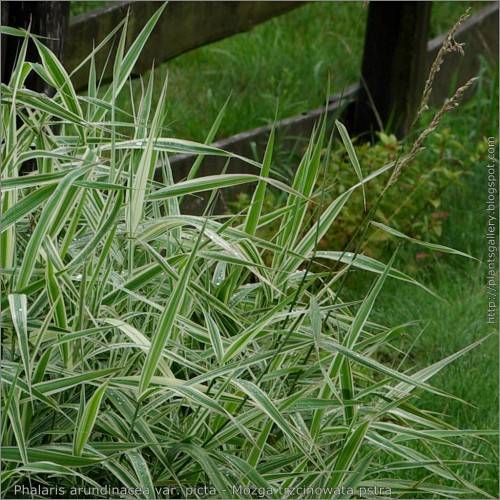
reed canary grass
Phalaris arundinacea var. picta 'Picta'
Also Known As - ribbon grassCycle:
Perennial
Watering:
Frequent
Hardiness Zone:
4 - 9
Flowers:
Flowers In Summer
Sun:
Full sun, Part sun/part shade
Soil:
Acidic, Bog, Humus rich
Fruits:
Fruits In Summer Ready In Fall
Leaf:
Yes
Growth Rate:
High
Maintenance:
Moderate
Drought Tolerant:
Yes
Salt Tolerant:
Yes
Invasive:
Yes
Care Level:
Moderate
watering
Reed canary grass (Phalaris arundinacea var. picta 'Picta') should be watered regularly, but avoid over-watering. Water when the top 1-2 inches of soil are dry to the touch. During the spring and summer, this could mean watering 1-2 times per week. During the fall and winter, watering can be reduced to once every 2-4 weeks. Keep in mind that the soil should be moist but not wet, and any standing water should be avoided.
sunlight
Reed canary grass (Phalaris arundinacea var. picta 'Picta') is a warm season plant that prefers full sun and 8-10 hours of direct sunlight per day. It thrives in locations with bright, unobstructed sunlight and does best in hot climates, particularly areas with warmer summers. In cooler climates, it should be planted in early spring so that it can take advantage of the long days and high temperatures that summer brings. For optimal growth, the plant should be placed in a south-facing location to make sure it receives the most amount of sunlight possible. In shadier settings, reed canary grass can still grow, but it will be more susceptible to disease and may not reach its full potential.
pruning
Reed canary grass (Phalaris arundinacea var. picta 'Picta') is best pruned in the late spring, when new growth begins to appear. The timing will vary depending on the local climate, but typically this will be during the months of April or May. Pruning should be done to remove dead or diseased shoots, as well as to thin out some of the denser sections of the clump. The most important factor to consider when pruning is the health of the plant, and only remove a portion of the growth at a time; if too much is pruned, it can have a negative effect on the overall health of the plant.
